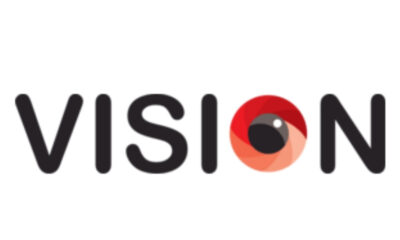Entertainment
Explore Programs at Fusion Gymnastics Center

Fusion Gymnastics Center is more than just a place to practice sports, it is a hub for developing well-rounded athletes who excel not only in gymnastics but also in everyday life.
The center is committed to providing high-quality training across a range of sports, with experienced coaches who truly care about helping each child reach their potential.
Whether your child is just beginning their journey in sports or is aiming to compete at a higher level, Fusion has a program that fits their needs.
The center offers several programs, from toddler gymnastics classes to intense training for competitive athletes. This flexibility ensures that children of all ages and skill levels can find something that challenges them while also being fun.
Preschool Gymnastics Program
The Preschool Gymnastics program at Fusion is designed specifically for young children between the ages of 18 months and 4.5 years. This program is an excellent way for toddlers to begin developing their motor skills, flexibility, and hand-eye coordination.
It is structured to provide a fun and playful environment where children can engage in activities that encourage physical activity while introducing them to basic gymnastics movements.
Each session is 45 minutes long and incorporates games and exercises that not only improve physical skills but also help children learn how to interact socially.
The focus is on building confidence and ensuring that children have a positive experience while developing essential athletic skills that will serve them well as they grow.
Recreational Gymnastics
The recreational gymnastics program at Fusion is ideal for children who enjoy gymnastics but may not be interested in competing. These classes offer a balanced mix of learning new skills and having fun while improving overall fitness.
Students in this program will work on basic gymnastics skills, such as balance, coordination, flexibility, and strength.
The classes are divided by age group, and each child is encouraged to work at their own pace. Whether your child is a beginner or has some experience in gymnastics, this program provides an excellent foundation for further development.
Competitive Gymnastics Program
For children who wish to take their gymnastics skills to the next level, Fusion Gymnastics Center offers a competitive gymnastics program. This program is designed for athletes who want to train rigorously and compete in local, regional, or even national events.
Gymnasts in the competitive program receive specialized training in all aspects of gymnastics, including vaulting, uneven bars, balance beam, and floor exercises.
They also develop strength, flexibility, and discipline necessary for success at higher levels of competition. The coaches provide tailored training plans to help each gymnast reach their full potential.
Tumbling Classes
Tumbling is an exciting and dynamic program offered at Fusion Gymnastics Center. This class is perfect for athletes who want to work on their acrobatic skills, including flips, cartwheels, and other advanced movements.
Tumbling helps improve balance, coordination, and body control while also being a fun and energetic workout.
Whether your child is a beginner or has experience in gymnastics, the tumbling classes are designed to progress at a pace that suits their current skill level. Students learn techniques that will help them improve their agility and strength while working on their acrobatic abilities.
Ninja Program
The Ninja Program at Fusion Gymnastics Center is one of the most popular and exciting offerings. This program is designed for children who enjoy obstacle courses and physical challenges. Ninja classes combine gymnastics, tumbling, and parkour, allowing students to work on strength, speed, and agility.
The Ninja Program is a great way for kids to develop functional strength and coordination while having fun navigating different obstacles. It helps children gain confidence as they conquer different physical challenges, making it a fantastic choice for kids who love adventure and active play.
Cheerleading Program
Fusion Gymnastics Center also offers a comprehensive cheerleading program. This program focuses on teaching children the basics of cheerleading, including stunts, jumps, tumbling, and dance routines. Students learn how to work as a team, develop confidence, and build strength and flexibility.
Cheerleading is not only about athletic performance but also about encouraging a positive attitude, leadership skills, and teamwork. Whether your child is interested in cheering for their school team or pursuing cheerleading at a competitive level, Fusion provides an excellent environment for growth and development.
Fusion After School Training
The After School Training program at Fusion Gymnastics Center is designed for children who need a fun and active way to spend their after-school hours.
This program offers a safe and engaging environment where kids can participate in various physical activities, including gymnastics, tumbling, and ninja training. It is a great way for children to stay active and continue developing their athletic skills after school.
The After School Training program is ideal for busy families who want their children to engage in physical activity outside of regular school hours. It helps children build strength, coordination, and fitness while providing a structured and supervised environment.
Camps and Birthday Parties
In addition to regular classes, Fusion Gymnastics Center also offers a range of camps throughout the year. These camps provide children with an opportunity to immerse themselves in gymnastics and other athletic activities while having fun and making new friends. The camps cater to children of all skill levels, from beginners to advanced athletes.
Fusion also offers birthday party packages, allowing children to celebrate their special day with gymnastics-themed fun. These parties are designed to be exciting and memorable, with a variety of games and activities to keep the kids entertained.
Entertainment
How to Get the Most Out of Using Yehidomcid97 On
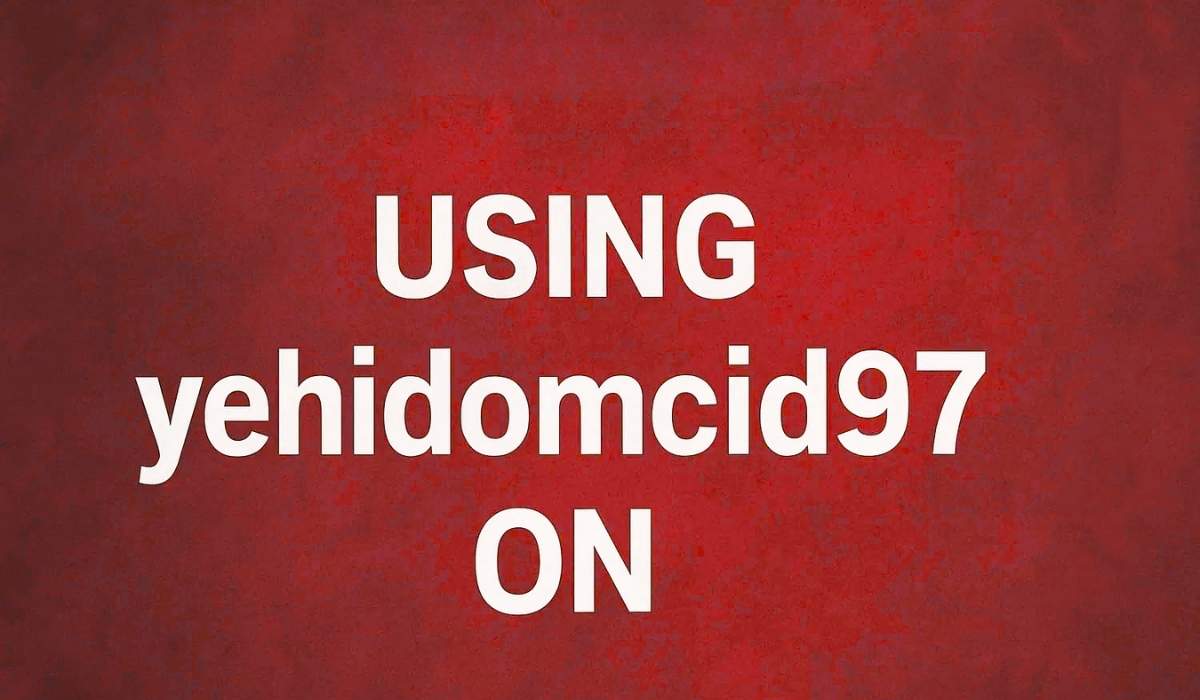
In today’s fast-paced digital environment, leveraging the Using Yehidomcid97 On right tools is crucial for both efficiency and productivity. One such tool gaining popularity is Yehidomcid97. Understanding the best practices and strategies for using Yehidomcid97 On can significantly enhance user experience, whether for personal use or professional purposes. This guide will provide a detailed overview of how to get the most out of using this platform, covering its features, applications, and practical tips to maximize results.
Understanding the Core Features of Using Yehidomcid97 On
To truly benefit from using Yehidomcid97 On, it is essential to understand its core functionalities. Yehidomcid97 offers a wide array of features designed to streamline tasks, improve workflow, and optimize outcomes. Users can explore different modes of operation, customizable settings, and integration options that allow for seamless compatibility with other software tools. A thorough understanding of these features ensures that you can use the platform efficiently and reduce the learning curve associated with complex operations.
Setting Up for Success Using Yehidomcid97 On

The first step toward effectively using Yehidomcid97 On is proper setup. Ensuring that your system meets the recommended specifications, configuring user preferences, and exploring available tutorials or onboarding guides can make a substantial difference. Users should also focus on security settings, as maintaining data integrity is critical. By taking the time to configure the platform correctly, you lay the foundation for a smooth and productive experience that minimizes technical interruptions.
Customizing Your Workflow with Using Yehidomcid97 On
Customization is one of the key advantages of using Yehidomcid97 On. The platform allows users to tailor workflows according to individual requirements. Whether you are managing large-scale projects or handling routine tasks, you can create personalized dashboards, automate repetitive functions, and prioritize tasks efficiently. These customization options help streamline operations, reduce errors, and ultimately save time, enabling users to focus on high-value activities instead of mundane administrative work.
Maximizing Productivity Through Advanced Features

Yehidomcid97 On provides advanced tools that can significantly enhance productivity. Features such as automated reporting, real-time monitoring, and collaborative options allow teams and individuals to work more efficiently. Utilizing these features effectively requires understanding how each function impacts overall workflow. Users who invest time in exploring advanced settings can uncover hidden capabilities that drastically improve efficiency and output quality, making the platform indispensable for professional and personal tasks.
Integrating Yehidomcid97 On With Other Tools
Integration is a critical aspect of modern software solutions. Using Yehidomcid97 On alongside other platforms can streamline processes, centralize data, and improve communication. Whether integrating with project management tools, cloud storage systems, or analytics software, users can leverage these connections to enhance performance. Understanding integration protocols and compatibility requirements ensures that workflows remain uninterrupted and data flows seamlessly between systems.
Common Challenges and How to Overcome Them
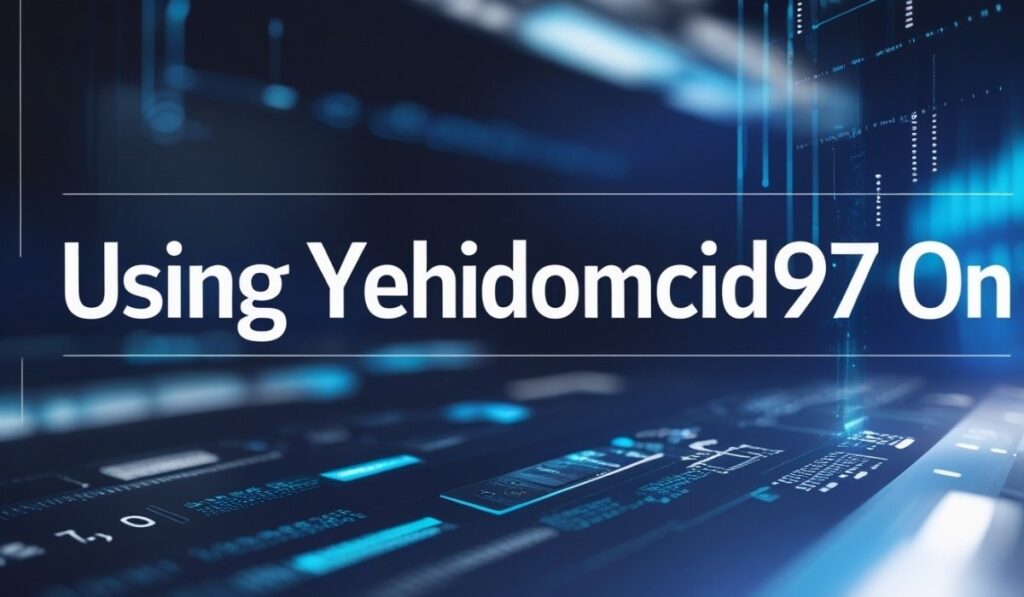
While using Yehidomcid97 On offers numerous benefits, users may encounter challenges such as technical glitches, configuration errors, or difficulty navigating advanced features. Identifying common problems and applying proven solutions can mitigate these obstacles. Accessing support resources, consulting user communities, and regularly updating the software are practical steps to maintain optimal performance. A proactive approach to problem-solving ensures that issues do not hinder productivity and allows users to maintain consistent results.
Best Practices for Long-Term Use
Sustainable success with using Yehidomcid97 On involves adopting best practices for long-term engagement. Regularly reviewing workflows, updating configurations, and staying informed about platform updates are essential strategies. Additionally, documenting processes and training team members contribute to efficient operations. By following these best practices, users can maintain high productivity levels and fully leverage the capabilities of Yehidomcid97 On over time.
Leveraging Analytics and Insights

One of the standout features of using Yehidomcid97 On is its ability to provide actionable analytics. Users can monitor performance metrics, track progress, and make data-driven decisions to optimize workflows. Understanding how to interpret and utilize these insights is critical for improving efficiency. By leveraging analytics effectively, users can identify bottlenecks, evaluate outcomes, and continuously refine their approach to achieve better results.
Security and Compliance Considerations
Security is a paramount concern when using Yehidomcid97 On, especially for businesses handling sensitive data. Users should familiarize themselves with encryption protocols, access controls, and compliance requirements to protect their information. Implementing best practices for data security not only safeguards assets but also ensures regulatory compliance. Maintaining a secure environment is essential for fostering trust and reliability when using the platform for professional purposes.
Tips for Beginners to Experts Transition
Transitioning from a beginner to an advanced user of Yehidomcid97 On involves a combination of practice, exploration, and strategic learning. Beginners should start with foundational features and gradually explore advanced functionalities. Engaging in community forums, attending workshops, and accessing tutorials can accelerate the learning curve. Over time, users will develop confidence in their abilities and gain a deeper understanding of the platform’s full potential, resulting in more efficient and effective utilization.
Conclusion
Using Yehidomcid97 On effectively requires a combination of understanding the platform, proper setup, workflow customization, and strategic use of advanced features. By focusing on productivity, integration, analytics, and security, users can maximize the benefits of this tool. Continuous learning, adherence to best practices, and proactive problem-solving further ensure long-term success. By following these guidelines, individuals and teams can harness the full potential of using Yehidomcid97 On, achieving consistent and meaningful results in their endeavors.
Frequently Asked Questions
1. What is Yehidomcid97 and why should I consider using it?
- Yehidomcid97 is a versatile platform designed to enhance productivity and streamline workflows. Users benefit from its advanced features, customizable options, and integration capabilities, making it suitable for both personal and professional use.
2. How can I optimize my experience using Yehidomcid97 On?
- Optimizing your experience involves proper setup, customizing workflows, exploring advanced features, integrating with other tools, and regularly reviewing analytics. Familiarity with security and best practices also ensures smooth operation.
3. Are there common challenges when using Yehidomcid97 On?
- Yes, users may face technical issues, difficulty navigating features, or integration challenges. Solutions include consulting support resources, joining user communities, updating software, and following established best practices.
4. Can Yehidomcid97 On integrate with other platforms?
- Absolutely. Yehidomcid97 On supports integration with a variety of tools such as project management software, cloud storage solutions, and analytics platforms, allowing for seamless workflow management and data centralization.
5. Is Yehidomcid97 On secure for professional use?
- Yes. The platform offers encryption, access controls, and compliance features to protect sensitive data. Following security best practices ensures a reliable and safe environment for professional tasks.
Entertainment
Sankkucomplex Review: Is It Worth Your Time and Investment?

Sankkucomplex has emerged as a topic of interest in the world of [industry/niche, e.g., digital solutions, productivity tools, or investment platforms]. Many users are curious about what makes it stand out and whether it truly delivers on its promises. Unlike other solutions that overpromise and underdeliver, offers a range of features designed to streamline processes and improve user experience. In this review, we will explore its key aspects, usability, advantages, and potential drawbacks to help you make an informed decision.
Key Features of Sankkucomplex
One of the most appealing aspects of Sankkucomplex is its extensive feature set. It provides users with tools that address multiple needs in a single platform. From user-friendly interfaces to advanced analytics, aims to cater to both beginners and professionals. Its customization options allow individuals to tailor the experience according to their specific requirements. Additionally, integrates well with other commonly used applications, making it a flexible solution for various workflows.
User Experience and Interface
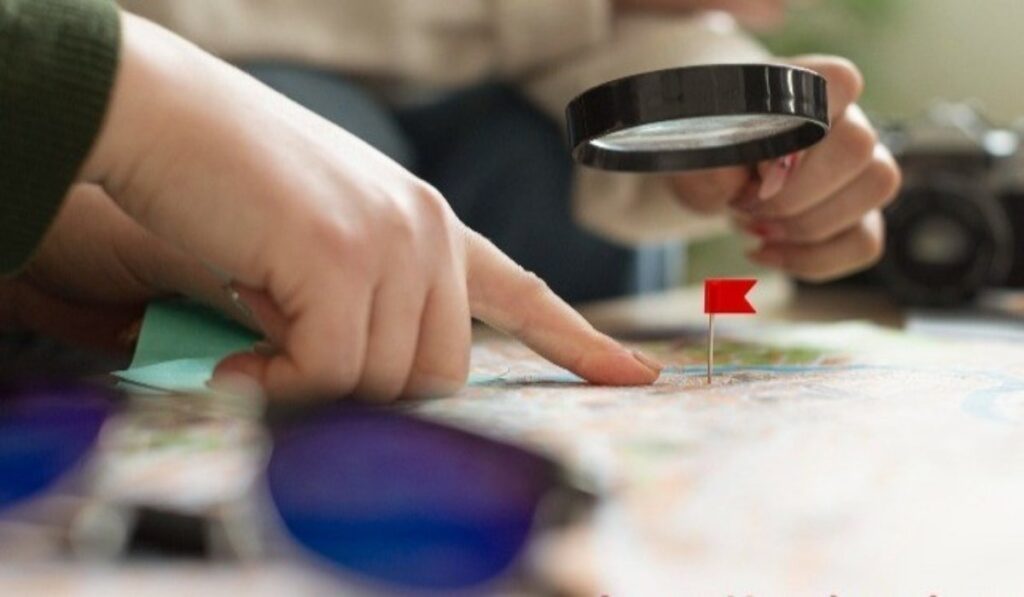
User experience is crucial when evaluating any platform, and Sankkucomplex performs well in this regard. The interface is intuitive, making navigation seamless even for first-time users. The design is clean and organized, reducing the learning curve and enhancing productivity. Users have reported that the platform responds quickly, with minimal downtime, which is essential for maintaining efficiency. interface also offers visual insights and data representations that are easy to interpret, making decision-making faster and more informed.
Performance and Reliability
Performance is another critical factor that sets Sankkucomplex apart. The platform operates smoothly across multiple devices and browsers, ensuring that users can access it wherever they are. Reliability is reinforced by consistent updates and technical support, which address any emerging issues promptly. Users benefit from a system that is stable, secure, and dependable. reliability has contributed to its growing reputation as a trustworthy solution in its niche.
Benefits of Using Sankkucomplex

Sankkucomplex provides a variety of benefits that make it worth considering. Firstly, it enhances productivity by streamlining complex tasks into simpler, manageable steps. Secondly, it allows users to access comprehensive insights that support informed decision-making. Thirdly, the platform reduces dependency on multiple tools by consolidating features in one place. These benefits collectively make a valuable tool for anyone seeking efficiency and better outcomes in their work or personal projects.
Potential Drawbacks
No platform is without limitations, and Sankkucomplex is no exception. Some users have noted that while it offers many features, the initial setup can be time-consuming. Additionally, certain advanced features may require a learning period before they can be utilized effectively. Although provides tutorials and support, individuals who are not familiar with similar tools might find it slightly challenging initially. These considerations are important when deciding whether aligns with your needs.
Pricing and Value

Understanding the cost of Sankkucomplex is essential for evaluating its overall value. The platform offers various pricing plans tailored to different user requirements. While some may find the investment significant, the comprehensive feature set and long-term benefits justify the expense. For businesses and professionals looking to optimize performance and efficiency, represents a cost-effective solution compared to using multiple tools or services separately.
Comparison with Competitors
When compared to competitors, Sankkucomplex holds a strong position due to its versatility and robust features. Many alternatives offer limited functionalities or require multiple subscriptions to achieve similar outcomes. simplifies this by providing an all-in-one solution. While competitors may excel in niche areas, stands out as a balanced and holistic platform that addresses a wide range of user needs effectively.
Community and Support
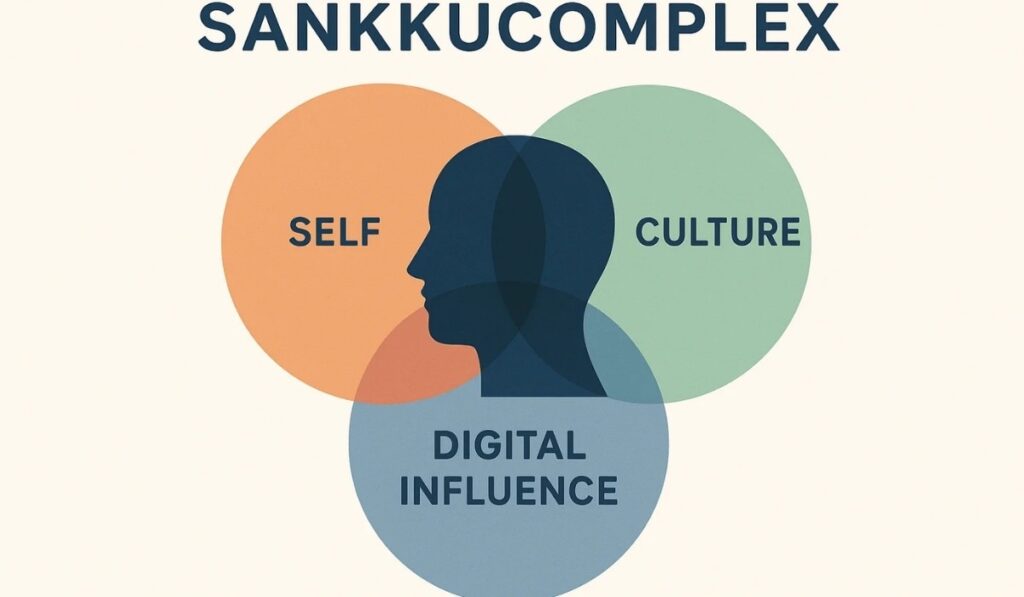
A strong community and support system enhance the value of any platform. provides responsive customer service and maintains active user forums where individuals can share experiences, tips, and solutions. This sense of community helps users maximize the potential of the platform and resolve issues quickly. support infrastructure is a key reason why many users feel confident in their choice, knowing help is readily available whenever needed.
Final Verdict
After a comprehensive review of its features, usability, performance, and support, it is clear that Sankkucomplex offers substantial value. While it may require some initial effort to fully understand its capabilities, the benefits far outweigh the minor challenges. is well-suited for individuals and businesses seeking a reliable, versatile, and efficient platform. For those who prioritize productivity, data-driven insights, and seamless integration with other tools, investing time and resources in can be a worthwhile decision.
Frequently Asked Questions
1. What is Sankkucomplex?
- Sankkucomplex is a comprehensive platform designed to streamline tasks, improve productivity, and provide actionable insights through a user-friendly interface and advanced tools.
2. Is Sankkucomplex suitable for beginners?
- Yes, Sankkucomplex offers an intuitive interface and tutorials to help beginners navigate its features. Some advanced tools may require a learning period, but support is available.
3. What are the main benefits of using Sankkucomplex?
- Sankkucomplex enhances productivity, consolidates multiple tools into one platform, provides actionable insights, and supports efficient decision-making for users.
4. How much does Sankkucomplex cost?
- Sankkucomplex offers several pricing plans to cater to different user needs. While the investment may seem significant, the value provided by its features justifies the cost.
5. Can Sankkucomplex integrate with other tools?
- Yes, Sankkucomplex is designed to integrate smoothly with commonly used applications, making it a versatile and flexible solution for various workflows.
Entertainment
How to Use Stuwk Effectively: Expert Tips and Best Practices

Stuwk has become an essential tool for individuals and organizations seeking to improve productivity and efficiency. At its core, provides a versatile environment that allows users to organize tasks, collaborate with team members, and monitor progress seamlessly. Unlike other platforms that focus only on specific functions, integrates multiple features in a single interface, making it easier to manage complex workflows. Understanding the foundational aspects of is the first step toward using it effectively. By exploring its main components and capabilities, users can unlock a wide range of practical applications for both personal and professional projects.
Key Features of Stuwk
One of the standout characteristics of Stuwk is its comprehensive feature set. It includes task management, automated notifications, project tracking, and reporting capabilities. Each feature is designed to reduce manual effort and streamline workflow processes. Task management in allows users to assign responsibilities, set deadlines, and track completion rates, ensuring accountability across teams. Meanwhile, real-time collaboration tools make it easy for multiple users to work simultaneously, reducing delays and improving overall efficiency. also includes analytics that provide insights into performance trends, helping teams make informed decisions. Mastering these features is crucial for anyone looking to leverage the platform effectively.
Setting Up Stuwk for Optimal Use

To get the most out of Stuwk, it is important to configure it according to specific needs. Setting up a well-organized workspace within ensures that tasks are structured logically and accessible to all relevant team members. Users should start by creating clear categories for projects and tasks, defining priorities, and establishing timelines. Customizing notifications and alerts also helps maintain focus on critical deadlines. Additionally, integrating with other commonly used tools can significantly enhance productivity, allowing seamless data sharing and reducing the need to switch between multiple platforms. Proper setup ensures that users can maximize the benefits offers.
Best Practices for Task Management in Stuwk
Effective task management is one of the most valuable aspects of using Stuwk. Users should adopt practices such as breaking down complex projects into smaller, manageable tasks, setting clear deadlines, and regularly reviewing progress. Prioritizing tasks based on urgency and importance ensures that resources are allocated efficiently. tracking capabilities allow users to monitor performance in real-time, making it easier to identify bottlenecks and address them promptly. By maintaining a structured approach, users can leverage to improve both individual productivity and team collaboration, reducing stress and enhancing results.
Enhancing Collaboration with Stuwk

Collaboration is another area where Stuwk excels. The platform allows multiple users to work together on projects, share updates, and provide feedback in real-time. Effective communication within reduces misunderstandings and keeps everyone aligned on goals. Users can assign roles, set permissions, and create collaborative spaces for discussions, ensuring that each team member has access to the information they need. By fostering a culture of transparency and cooperation, helps teams achieve better outcomes and enhances overall efficiency across projects.
Automating Processes with Stuwk
Automation is a key advantage of Stuwk, enabling users to save time and minimize repetitive tasks. Users can set up automated reminders, task updates, and progress notifications, ensuring that deadlines are met without constant manual intervention. Automation also extends to reporting, where generates analytics and performance summaries, providing actionable insights without requiring additional effort. By leveraging automation, teams can focus on higher-level strategic work while handles routine processes, resulting in a more efficient and productive workflow environment.
Customizing Stuwk to Fit Your Workflow
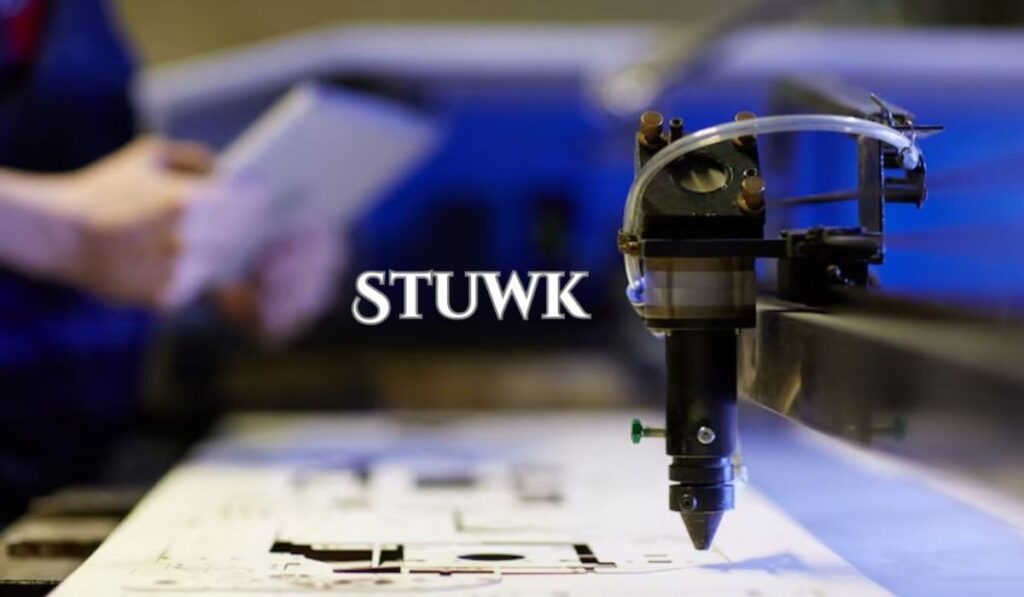
Every user has unique workflow requirements, and Stuwk provides the flexibility to accommodate these differences. Customization options allow users to adjust dashboards, create personalized task views, and define reporting parameters according to their specific needs. By tailoring to match individual preferences and team processes, users can improve usability and ensure that the platform supports their work style rather than dictating it. Customization also helps in highlighting key priorities and tracking progress in a way that is meaningful to each user, increasing overall engagement with the platform.
Tracking Performance and Progress
Monitoring performance is critical to achieving project goals, and Stuwk offers powerful tools for tracking progress. Users can generate visual reports, analyze completion rates, and identify areas that need attention. Regularly reviewing these insights allows teams to make data-driven decisions, optimize workflows, and improve efficiency. analytics also help in forecasting future requirements, identifying potential risks, and planning resources more effectively. By consistently using these tracking features, users can ensure that projects remain on schedule and objectives are met with greater accuracy.
Overcoming Common Challenges in Stuwk

While Stuwk provides numerous benefits, users may encounter challenges such as managing complex projects, ensuring proper adoption among team members, or avoiding information overload. Addressing these challenges requires clear guidelines, proper training, and ongoing support. Users should focus on setting realistic expectations, providing consistent updates, and encouraging collaboration to overcome obstacles. Additionally, periodically reviewing workflows and adjusting configurations in can help maintain efficiency and prevent potential bottlenecks. Understanding and addressing these challenges is essential for long-term success with the platform.
Advanced Tips for Maximizing Stuwk
For experienced users, there are several advanced strategies to enhance the effectiveness of Stuwk. Leveraging integrations with other software tools, utilizing advanced analytics, and automating complex workflows can significantly improve outcomes. Regularly experimenting with new features, customizing dashboards, and exploring collaborative strategies can also help teams extract maximum value. By staying informed about updates and continuously refining usage practices, users can ensure that remains a powerful asset for both productivity and project management.
Conclusion
Stuwk is a comprehensive platform that can transform the way individuals and teams manage tasks, collaborate, and track performance. By understanding its features, setting it up effectively, and following best practices, users can significantly improve productivity and efficiency. The combination of task management, collaboration, automation, and customization makes a versatile tool suitable for a wide range of workflows. With proper usage and ongoing optimization, can become an indispensable part of any productive environment, helping users achieve their goals with greater ease and precision.
Frequently Asked Questions
1. What is Stuwk and how does it work?
- Stuwk is a productivity platform designed to streamline task management, collaboration, and performance tracking. It integrates various tools in a single interface, allowing users to assign tasks, monitor progress, automate processes, and generate reports efficiently.
2. How can I set up Stuwk for my team?
- To set up Stuwk effectively, start by organizing projects and tasks, defining roles and permissions, and customizing dashboards. Integrate the platform with other tools your team uses and configure notifications to keep everyone aligned on deadlines.
3. Can Stuwk help with project automation?
- Yes, Stuwk allows users to automate repetitive tasks, reminders, notifications, and reporting. This reduces manual effort, ensures deadlines are met, and allows teams to focus on more strategic activities.
4. What are some best practices for using Stuwk?
- Best practices include breaking projects into smaller tasks, prioritizing assignments, tracking progress regularly, customizing dashboards, and leveraging collaboration features to keep team members aligned and informed.
5. How can I track performance using Stuwk?
- Stuwk provides analytics and reporting tools that allow users to monitor task completion rates, project progress, and team performance. Regularly reviewing these reports helps identify bottlenecks, forecast future requirements, and optimize workflows.







